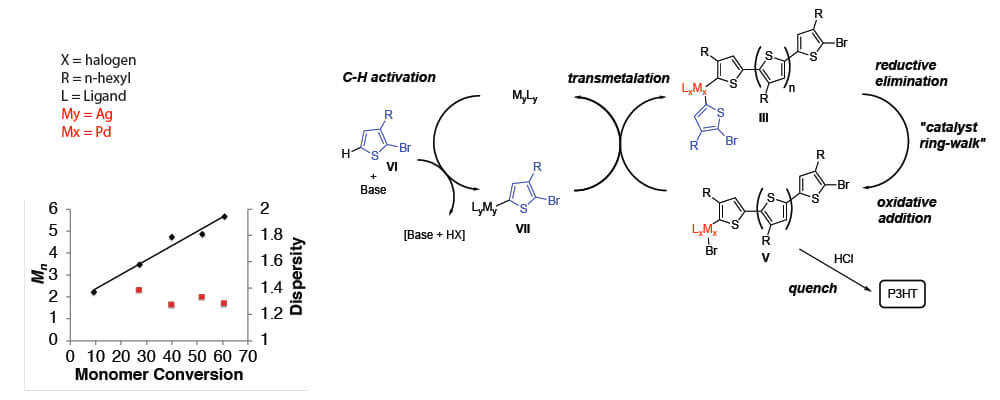Dual-Catalytic Ag–Pd System for Direct Arylation Polymerization to Synthesize Poly(3-hexylthiophene)
Jason A. Lee, Christine K. Luscombe
ACS Macro Lett.,
2018, 7, pp 767–771; DOI: 10.1021/acsmacrolett.8b00429

06/2018
Direct arylation polymerization (DArP) has gained interest in materials chemistry as a method to synthesize conjugated polymers with minimal use of harsh reagents and additional steps. Traditional DArP conditions do not readily yield ideal polymerization characteristics, including chain-growth and low dispersities. It would be of great utility to advance DArP methodology to become competitive with traditional conjugated polymerization techniques. To this end, achieving a living polymerization has been a major goal.
We have developed conditions for a dual-catalytic Ag–Pd system for the synthesis of poly(3-hexylthiophene) (P3HT) that exhibits chain-growth kinetics, low dispersities, and catalyst chain association by Pd. Specifically, the presence of Ag-carboxylate additives plays a beneficial role in the polymerization as a C–H activating agent, while PEPPSI-iPr is used as the Pd source for C–C coupling. The addition of pyridine is necessary to inhibit Pd-mediated C–H activation in the interest of catalyst orthogonality, which can lower dispersity’s.